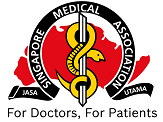Comparison of two regimens of vitamin D supplementation for vitamin D-deficient neonates
Shakiba M, Pahloosye A, Mirouliaei M, Islami Z
Correspondence: Dr Mehrdad Shakiba, shakiba@ssu.ac.ir
ABSTRACT
INTRODUCTION Vitamin D deficiency is common in pregnant women, and supplementation of vitamin D is necessary for the infants of these women. This study explored the efficacy of an alternative way of vitamin D supplementation in an area with a high prevalence of vitamin D deficiency in mothers.
METHODS This was a non-randomised clinical trial conducted in 2010 in Yazd, Iran. Full-term healthy infants born to vitamin D-deficient mothers (n = 82) were divided into the high-dose regimen (HDR; single oral bolus 30,000 IU vitamin D3, n = 34) and the standard-dose regimen (SDR; 400 IU/day vitamin D3 within two weeks of life, n = 48) groups. 25-hydroxyvitamin D (25OHD) was measured using chemiluminescent immunoassays, and 25OHD level > 20 ng/mL was deemed sufficient.
RESULTS Over 90% of infants in the HDR group attained vitamin D sufficiency within one month, while comparable sufficiency was reached in the SDR group only after four months. At two months, the proportion of infants attaining 25OHD > 30 ng/mL was 93.3% and 27.9% in the HDR and SDR groups, respectively (p = 0.003). None of our infants achieved 25OHD levels > 100 ng/mL.
CONCLUSION For infants born to vitamin D-deficient mothers, oral supplementation of 30,000 IU vitamin D3 during the first month of life, followed by a routine recommended dose of 400 IU/day, should be considered. The four-month lag for attaining vitamin D sufficiency in 90% of infants in the SDR group may have clinical implications and should be further investigated.
Keywords: infant, supplement, vitamin D
Singapore Med J 2014; 55(5): 266-270; http://dx.doi.org/10.11622/smedj.2014070
REFERENCES
| 1. Wagner CL, Greer FR. American Academy of Pediatrics Section on Breastfeeding; American Academy of Pediatrics Committee on Nutrition. Prevention of rickets and vitamin D deficiency in infants, children, and adolescents. Pediatrics 2008; 122:1142-52. http://dx.doi.org/10.1542/peds.2008-1862 | ||||
| 2. No authors listed. Vitamin D supplementation: Recommendations for Canadian mothers and infants. Paediatr Child Health 2007; 12:583-98. | ||||
| 3. Holick MF, Binkley NC, Bischoff-Ferrari HA, et al. Evaluation, treatment, and prevention of vitamin D deficiency: an Endocrine Society clinical practice guideline. J Clin Endocrinol Metab 2011; 96:1911-30. http://dx.doi.org/10.1210/jc.2011-0385 | ||||
| 4. Bowyer L, Catling-Paull C, Diamond T, et al. VitaminD, PTH and calcium levels in pregnant women and their neonates. Clin Endocrinol (Oxf) 2009; 70:372-7. http://dx.doi.org/10.1111/j.1365-2265.2008.03316.x | ||||
| 5. Palacios C, Gonzalez L. Is vitamin D deficiency a major global public health problem? J Steroid Biochem Mol Biol 2013 Nov 12. http://dx.doi.org/10.1016/j.jsbmb.2013.11.003 | ||||
| 6. Novakovic B, Galati JC, Chen A, et al. Maternal vitamin D predominates over genetic factors in determining neonatal circulating vitamin D concentrations. Am J Clin Nutr 2012; 96:188-95. http://dx.doi.org/10.3945/ajcn.112.035683 | ||||
| 7. Searing DA, Leung DY. Vitamin D in atopic dermatitis, asthma and allergic diseases. Immunol Allergy Clin North Am 2010; 30:397-409. http://dx.doi.org/10.1016/j.iac.2010.05.005 | ||||
| 8. Kamen DL, Tangpricha V. Vitamin D and molecular actions on the immune system modulation of innate and autoimmunity. J Mol Med (Berl) 2010; 88:441-50. http://dx.doi.org/10.1007/s00109-010-0590-9 | ||||
| 9. Bikle DD. Vitamin D regulation of immune function. Vitam Horm 2011; 86:1-21. http://dx.doi.org/10.1016/B978-0-12-386960-9.00001-0 | ||||
| 10. Hyppönen E, Läärä E, Reunanen A, et al. Intake of vitamin D and risk of type 1 diabetes: a birth-cohort study. Lancet 2001; 358:1500-3. http://dx.doi.org/10.1016/S0140-6736(01)06580-1 | ||||
| 11. Dijkstra SH, van Beek A, Janssen JW, et al. Prevalence of vitamin D deficiency in newborn infants of high-risk mothers. Arch Dis Child 2007; 92:750-3. PMid:17715438 PMCid:PMC2084031 | ||||
| 12. Zeghoud F, Vervel C, Guillozo H, et al. Subclinical vitamin D deficiency in neonates: definition and response to vitamin D supplements. Am J Clin Nutr 1997; 65:771-8 PMid:9062528 | ||||
| 13. Vervel C, Zeghoud F, Boutignon H, et al. [Fortified milk and supplements of oral vitamin D. Comparison of the effect of two doses of vitamin D (500 and 1,000 UI/d) during the first trimester of life]. Arch Pediatr 1997; 4:126-32. French. http://dx.doi.org/10.1016/S0929-693X(97)86154-4 | ||||
| 14. Wagner CL, Howard C, Hulsey TC, et al. Circulating 25-hydroxyvitamin d levels in fully breastfed infants on oral vitamin D supplementation. Int J Endocrinol 2010; 2010:235035. | ||||
| 15. Abrams SA, Hawthorne KM, Rogers SP, Hicks PD, Carpenter TO. Effects of ethnicity and vitamin D supplementation on vitamin D status and changes in bone mineral content in infants. BMC Pediatr 2012; 12:6. http://dx.doi.org/10.1186/1471-2431-12-6 | ||||
| 16. Onal H, Adal E, Alpaslan S, Ersen A, Aydin A: Is daily 400 IU of vitamin D supplementation appropriate for every country: a cross-sectional study. Eur J Nutr 2010; 49:395-400. http://dx.doi.org/10.1007/s00394-010-0097-8 | ||||
| 17. Merewood A, Mehta SD, Grossman X, et al. Vitamin D status among 4-month-old infants in New England: a prospective cohort study. J Hum Lact 2012; 28:159-66. http://dx.doi.org/10.1177/0890334411434802 | ||||
| 18. Kim MJ, Na B, No SJ, et al. Nutritional status of vitamin D and the effect of vitamin D supplementation in Korean breast-fed infants. J Korean Med Sci 2010; 25:83-9. http://dx.doi.org/10.3346/jkms.2010.25.1.83 | ||||
| 19. Greer FR. 25-Hydroxyvitamin D: functional outcomes in infants and young children. Am J Clin Nutr 2008; 88:529S-533S. PMid:18689395 | ||||
| 20. Hollis BW, Wagner CL. Vitamin D requirements during lactation: high-dose maternal supplementation as therapy to prevent hypovitaminosis D for both the mother and the nursing infant. Am J Clin Nutr 2004; 80:1752S-8S. PMid:15585800 | ||||
| 21. Haggerty LL. Maternal supplementation for prevention and treatment of vitamin D deficiency in exclusively breastfed infants. Breastfeed Med 2011; 6:137-44. http://dx.doi.org/10.1089/bfm.2010.0025 | ||||
| 22. Shakiba M, Sadr S, Nefei Z, et al. Combination of bolus dose vitamin D with routine vaccination in infants: a randomised trial. Singapore Med J 2010; 51:440-5. PMid:20593151 | ||||


